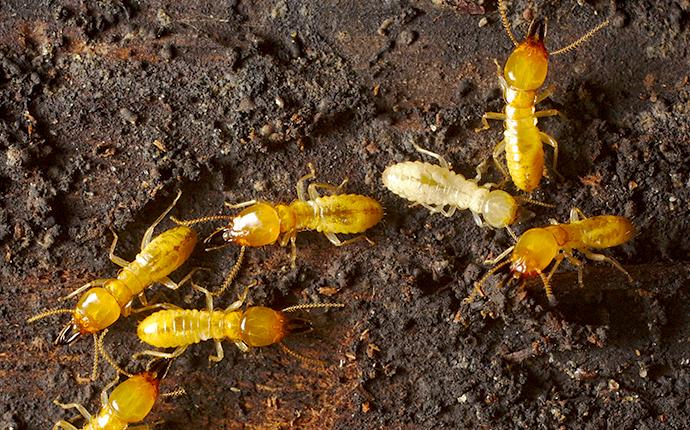Termites in Houston are known as silent destroyers because they can live on your property, feed on wooden structures, and cause thousands of dollars’ worth of damage for years without ever being noticed.
Identifying Termites And Their Damage
Eastern Subterranean, Formosan Subterranean, and Drywood termites are the three types of termites you might encounter in Houston, Texas. Termites are usually ¼ to ½ of an inch long. Depending on the species, termites can range from cream-colored to brown.
Termites damage wooden structures, and because most homes are built out of wood, termites can be detrimental for property owners. Drywood termites earn their name because they don’t feed on wood that has been water damaged like other termites. Drywood termites live in wood and feed on it, whereas eastern subterranean and Formosan subterranean termites live in the soil and travel to and from the wood they are feeding on.
What Attracts Termites?
Although different species of termites are attracted to different types of wood, such as dry wood or water-damaged, termites aren’t just attracted to wood; they are attracted to anything made out of cellulose. Cellulose is an organic compound and is found on anything made out of plant material. Other factors that attract termites are:
- Moisture: Termites need moisture to survive, and water damaged wood is a favorite food for many termites.
- Warmth: Like many other insects, termites need warmth to survive and will die in temperatures below 25 degrees Fahrenheit.
- Darkness: Some species of termites use mud tubes to travel from the soil to their food source. These tunnels, as well as darkness, help to protect them from predators such as birds, reptiles, and other insects as well as the drying effects of the sun and air.
Other factors around your Houston property that may make it more attractive to termites are:
- Mulch
- Piles of wood
- Piles of branches
- Unmaintained gutters
- Excess foliage
Termite Prevention
You can reduce or even eliminate the factors listed above to help prevent termites on your property:
- Removing moisture should be your main priority in termite prevention. If you have a leaky pipe, you shouldn’t just repair the pipe and make sure the wood around it is dried out or replaced. You should ensure that areas in your house prone to moisture, such as the bathroom and near the kitchen sink, are properly caulked and sealed to prevent water from entering the house structure. Finally, make sure you properly maintain your gutters as build-up can cause water to cause moisture damage to the house.
- An adequately maintained yard helps to prevent a lot of pests, not just termites. It is best to keep mulch, woodpiles, and excess foliage away from the foundation of your home. And keep bushes and trees trimmed back as well. This allows airflow and sunlight to dry out the perimeter of your home, thus preventing water-damaged wood.
- Proper yard maintenance is crucial. Any wood-based materials left on the ground need to be removed from your property, or at least kept dry and stored up off the ground. These include things such as firewood, piles of cardboard, construction materials, etc.
Professional Termite Prevention & Control
For the best termite prevention and elimination in Houston, Texas, contact the professionals at Romney Pest Control. Our team follows a three-step termite control process. (1) Inspection of the property for current termite activity. (2) Installation of strategically placed Sentricon® bait stations. (3) Monitoring with an active termite control plan that best suits you and your property.
Request a free quote today and let Romney Pest Control help you with all your pest prevention and control needs.




